Filter by
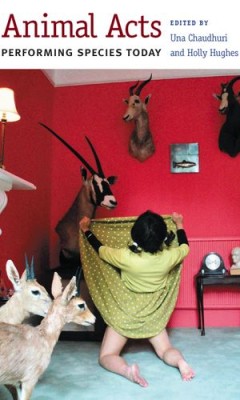
Animal Acts Performing Species Today
We all have an animal story—the pet we loved, the wild animal that captured our childhood imagination, the deer the neighbor hit while driving. While scientific breakthroughs in animal cognition, the effects of global climate change and dwindling animal habitats, and the exploding interdisciplinary field of animal studies have complicated things, such stories remain a part of how we tell the …
- Edition
- -
- ISBN/ISSN
- 9780472901104
- Collation
- -
- Series Title
- -
- Call Number
- -
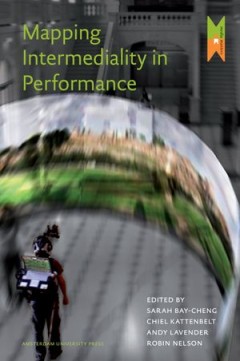
Mapping Intermediality in Performance
This volume examines afresh the impact upon acting and performance of digital technologies. It is concerned with how digital culture combines the traditional ‘liveness’ of theatre with media interfaces and internet protocols. The time and space of the ‘here and now’ are both challenged and adapted, just as barriers between theatre-makers and the ‘experiencers’ of events are broken d…
- Edition
- -
- ISBN/ISSN
- 9789089642554
- Collation
- -
- Series Title
- -
- Call Number
- 792 NEL m
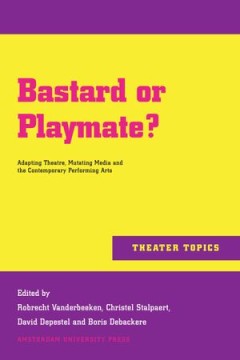
Bastard or Playmate?
Artistic media seem to be in a permanent condition of mutation and transformation. Contemporary artists often investigate the limits and possibilities of the media they use and experiment with their crossing, upgrading and mutilation. Others explicitly explore the unknown space between existing media, searching for the hybrid beings that occupy these in-betweens. This fascinating volume explore…
- Edition
- -
- ISBN/ISSN
- 9789089642585
- Collation
- -
- Series Title
- -
- Call Number
- 792 VAN b
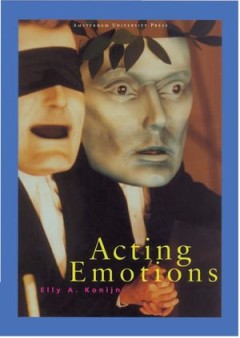
Acting Emotions
Actors and actresses play characters such as the embittered Medea, or the lovelorn Romeo, or the grieving and tearful Hecabe. The theatre audience holds its breath, and then sparks begin to fly. But what about the actor? Has he been affected by the emotions of the character he is playing? What's going on inside his mind? The styling of emotions in the theatre has been the subject of heated deba…
- Edition
- -
- ISBN/ISSN
- 9789053564448
- Collation
- -
- Series Title
- -
- Call Number
- 792 KON a
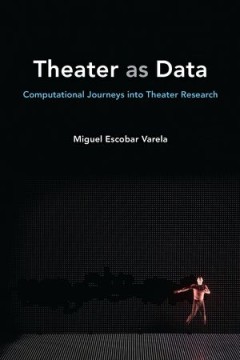
Theater as Data: Computational Journeys into Theater Research
In Theater as Data, Miguel Escobar Varela explores the use of computational methods and digital data in theater research. He considers the implications of these new approaches, and explains the roles that statistics and visualizations play. Reflecting on recent debates in the humanities, the author suggests that there are two ways of using data, both of which have a place in theater research. D…
- Edition
- -
- ISBN/ISSN
- 9780472128631
- Collation
- -
- Series Title
- -
- Call Number
- 792 VAR v

Animal Acts: Performing Species Today
We all have an animal story—the pet we loved, the wild animal that captured our childhood imagination, the deer the neighbor hit while driving. While scientific breakthroughs in animal cognition, the effects of global climate change and dwindling animal habitats, and the exploding interdisciplinary field of animal studies have complicated things, such stories remain a part of how we tell the …
- Edition
- -
- ISBN/ISSN
- 9780472901104
- Collation
- -
- Series Title
- -
- Call Number
- 792 ANI a
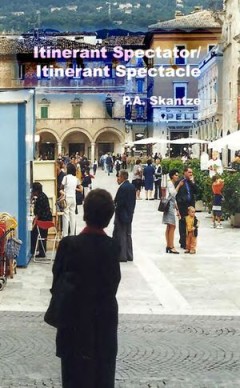
Itinerant Spectator/Itinerant Spectacl
Itinerant Spectator/Itinerant Spectacle moves across the landscape of European performance in late 20th and early 21st centuries, recounting performance in circulation across national borders and across the itinerant bodies of spectators who travel to meet performances that travel. Itinerant Spectator/Itinerant Spectacle suggests spectating is a practice — an act of interpretation engaged in …
- Edition
- -
- ISBN/ISSN
- 9780615858968
- Collation
- -
- Series Title
- -
- Call Number
- 792 SKA i
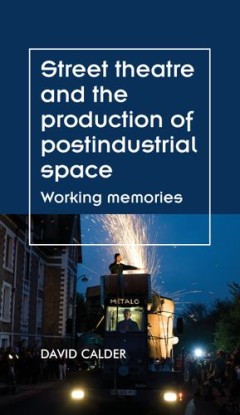
Street theatre and the production of postindustrial space
Street theatre and the production of postindustrial space explores how street theatre transforms industrial space into postindustrial space. Deindustrializing communities have increasingly turned to cultural projects to commemorate industrial heritage while simultaneously generating surplus value and jobs in a changing economy. Through analysis of French street theatre companies working out of …
- Edition
- -
- ISBN/ISSN
- 9781526147288
- Collation
- -
- Series Title
- -
- Call Number
- 792 CAL s
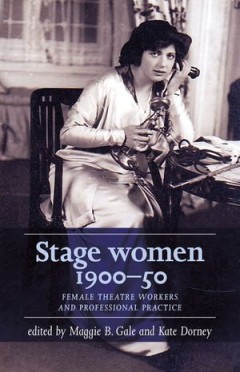
Stage women, 1900–50
Stage women, 1900–50 explores the many ways in which women conceptualised, constructed and participated in networks of professional practice in the theatre and performance industries between 1900 and 1950. A timely volume full of original research, the book explores women’s complex negotiations of their agency over both their labour and public representation, and their use of personal and p…
- Edition
- -
- ISBN/ISSN
- 9781526147271
- Collation
- -
- Series Title
- -
- Call Number
- 792 GAL s
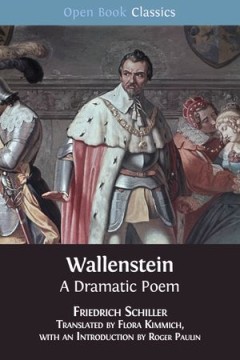
Wallenstein
By the time Frederich Schiller came to write the Wallenstein trilogy, his reputation as one of Germany’s leading playwrights was all but secured. Consisting of Wallenstein’s Camp, The Piccolomini and The Death of Wallenstein, this suite of plays appeared between 1798 and 1799, each production under the original direction of Schiller’s collaborator and mentor, Johann Wolfgang (von) Goethe.…
- Edition
- -
- ISBN/ISSN
- 9781783742653
- Collation
- -
- Series Title
- -
- Call Number
- 792 SCH w
 Computer Science, Information & General Works
Computer Science, Information & General Works  Philosophy & Psychology
Philosophy & Psychology  Religion
Religion  Social Sciences
Social Sciences  Language
Language  Pure Science
Pure Science  Applied Sciences
Applied Sciences  Art & Recreation
Art & Recreation  Literature
Literature  History & Geography
History & Geography